ITER Project in 2017

Project
The rules of drama of long-running serials imply that the source of future dramatic events should be laid at the moment of a triumphant victory over the problem of the previous one. It seems that the history of the project of an international experimental thermonuclear reactor (ITER) is written by scriptwriters familiar with this rule - against the background of a triumphant overcoming of difficulties that almost killed the world's most expensive scientific construction in 2015, shadows of new, future problems appear that can play their fatal role .
In particular, the new round of US isolationism in 2016 was formed with the new US President rejecting the benefits of long investments in science, and as a result, the US planned spending on ITER in 2018 in the amount of ~ $ 65 million against the required 175. If this situation continues for another couple of years , then a new transfer of the launch date of the international tokamak is inevitable, and then a new round of cooling interest in the project.
')
For contrast, the European Parliament, on the contrary, decided to allocate to ITER all the money requested (about 6 billion euros until 2025).
Nevertheless, all these difficulties, if they result in a real slipping of deadlines, then only in a few years. For the time being, the ITER management opens up champagne, noting the 50% man-hours costs from November 2017 to the first plasma (in 2025) passed in November 2017.
Construction of buildings on the site is gradually coming to an end - in 2018, 85% of the facilities required for the first plasma will be ready for installation of equipment. Actually, the next year will be the year of wide deployment of the project equipment installation - including the first pipelines and supports will be installed in the tokamak building. However, first of all, I would like to remind you that I have an article with answers to the most frequently asked questions on ITER .
Construction and installation of equipment

- The main reactor building (virtually divided into Tritium, Tokamak and Diagnostic) buildings in 2017 grew by 2 floors. This complex also passed its labor equator in the summer of 2017, and the installation of multiple ITER systems should begin on the lower floors in early 2018.

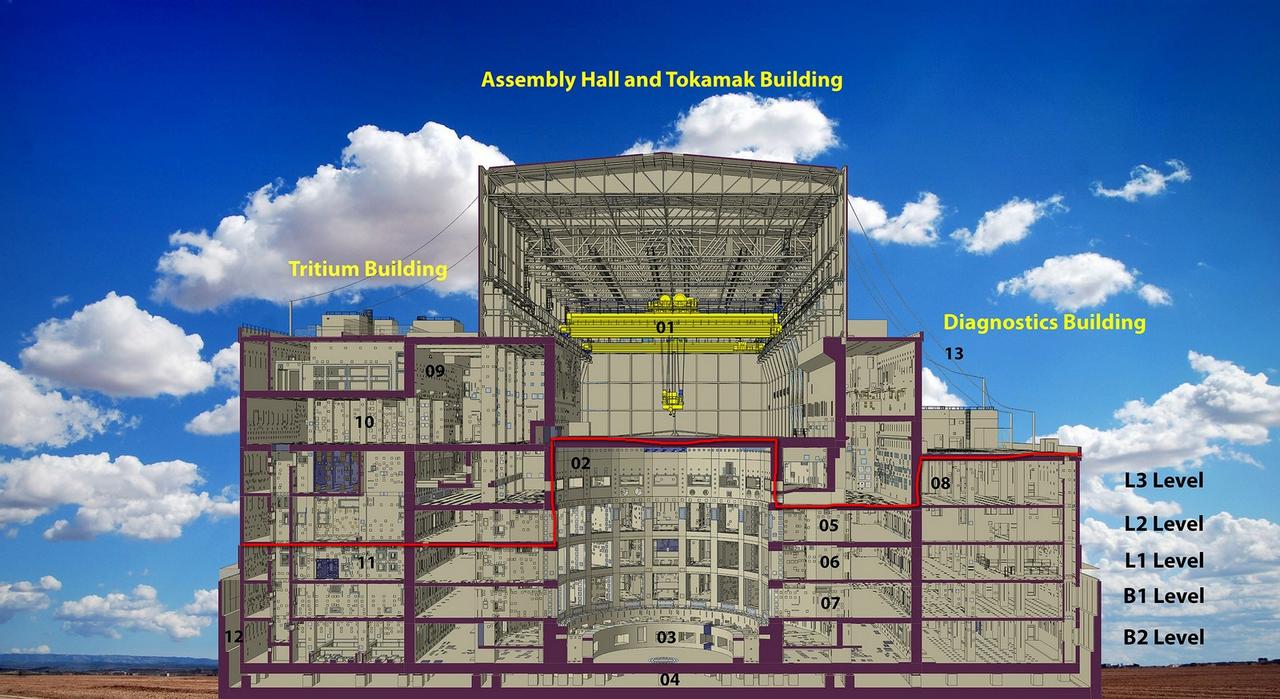
The constructed part of the tokamak building complex is shown in red.
- For 2017, the buildings of the magnetic system rectifiers have gone from the foundations to the ones that were commissioned for finishing. The first of the transformers that will power the grand active rectifiers have already appeared here.


Active thyristor rectifiers are needed to control the current in ITER magnets.
- The building of the cryogenic plant , whose task is to provide the complex with liquid nitrogen and helium (it will be the second in the world in terms of productivity of the liquid helium plant after located at the Large Hadron Collider) was commissioned by builders in the autumn of 2017 - equipment is being installed in it.
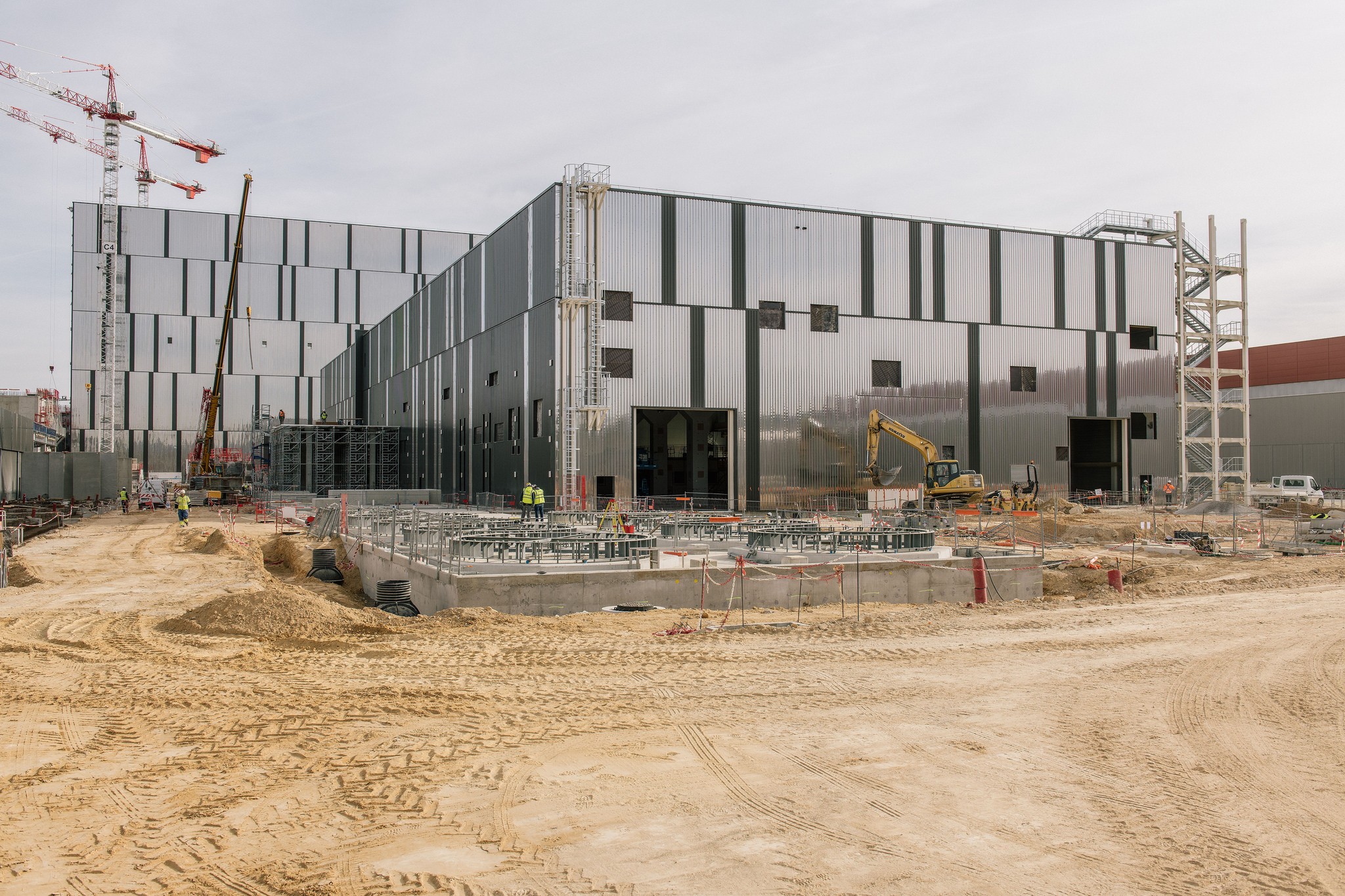
Cryocomb building. To his left is a platform with foundations for massive cryogenic equipment such as tanks and distillation columns, which will be installed next year.

Installation of “cold volumes” with helium liquefiers in the cryogenics building in summer 2017
- The complex’s electrical networks and cooling water pipelines were actively built.
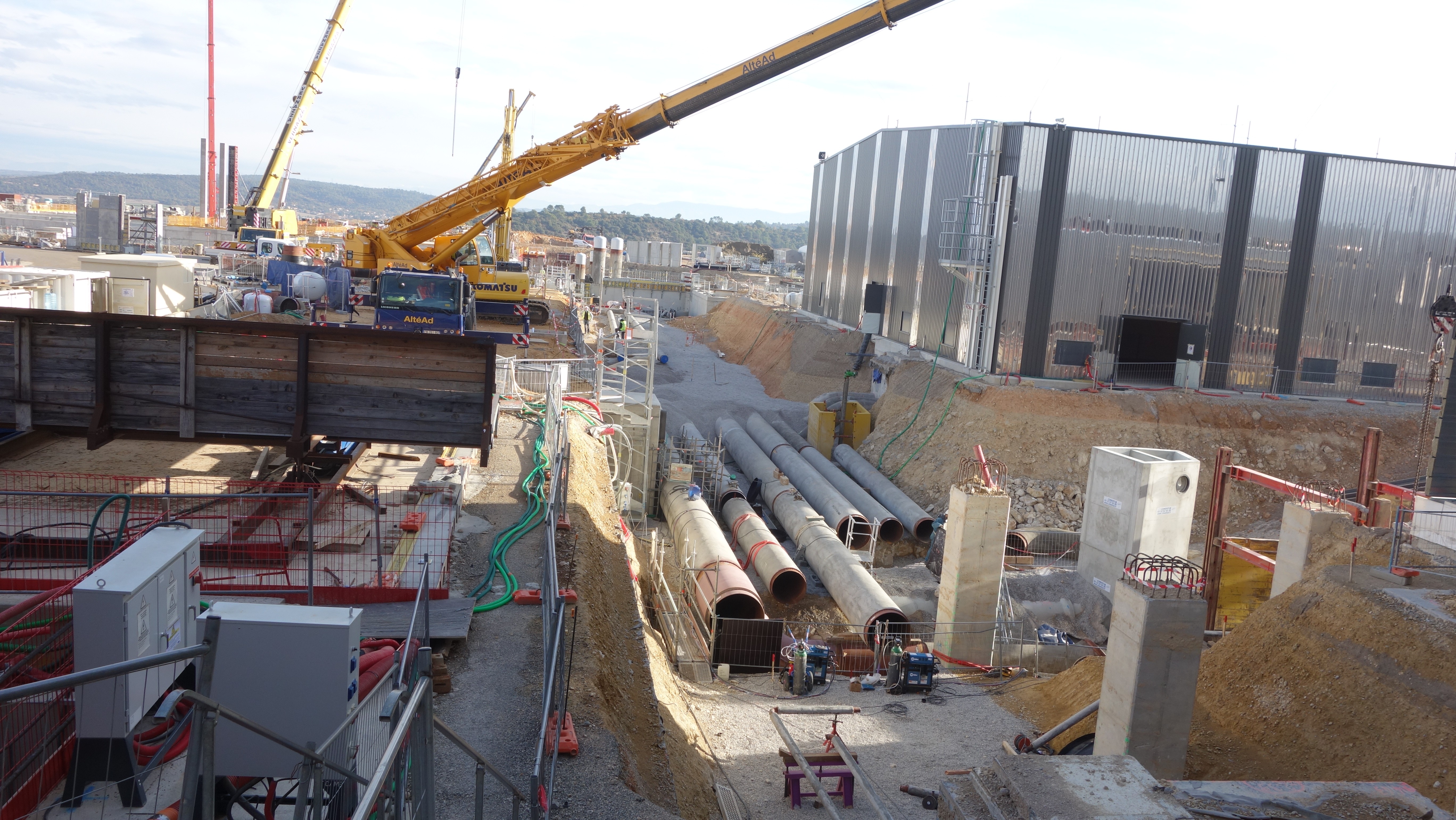
The photo above pipe tokamak cooling system and components of the complex. Pipe diameter - 2 meters

In the background you can see an open switchgear and 110-megawatt constant load power distribution center
- In the pre-assembly building, practically in 2017, all bridge cranes were completed and tested (including a record load capacity of 750 tons each, which could work in a pairing) and in December, the installation of the first stand of the assembly of tokamak sectors began.


- In 2017, the concrete base of the heat release system (with a capacity of 1,150 megawatts) was built - and in 2018 we will see the installation of 10 fan cooling towers and 40 pumps with a total capacity of about 70 megawatts on this complex.
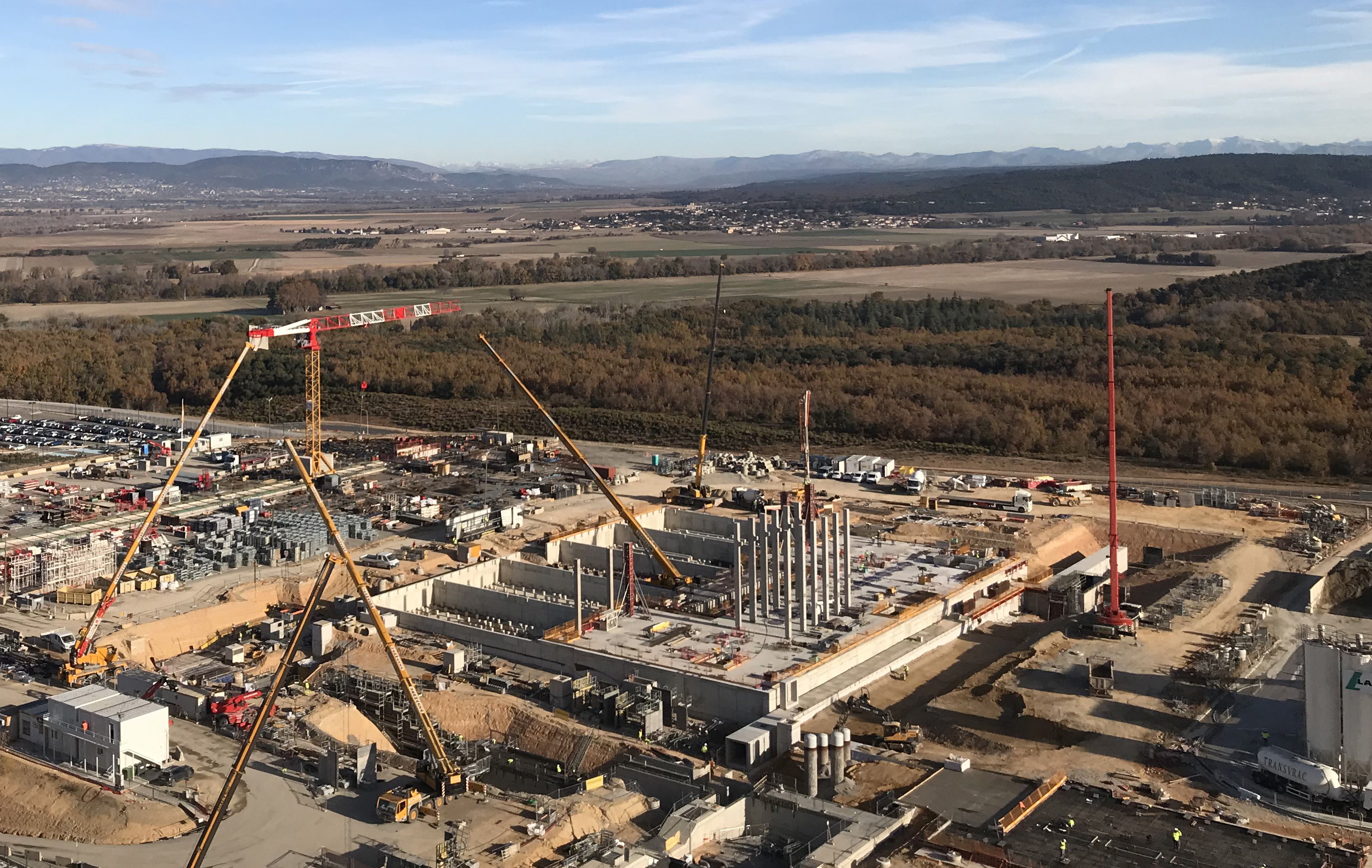
- In 2017, after the factory acceptance in Korea, the installation of grand stands of the assembly of tokamak sectors was started in the pre-assembly building

Build the first stand for assembly. It's funny, but these ring rails precisely outline the dimensions of the plasma donut, which in 7 years should catch fire at ITER.

Equipment manufacturing
- The first element from which the tokamak assembly will begin in 2020 should be the base of the cryostat laid on the support ring at the bottom of the reactor shaft. This part is as big and heavy (30 meters in diameter, 6 meters high and 1280 tons in weight), that it is welded on the slipway right on the ITER site 200 meters from the installation site. Welding of the first elements began solemnly in September 2016, but the Hindu-German team, which is engaged in this work, does it at the pace of a snail. Currently, the base elements are fully exposed on the stocks, but not even the welding of the main elements is completed, and there are still checks on the seams and welding of hundreds of small elements.


The square formed by the walls of the ring is the supporting structure of the reactor, therefore steel up to 120 mm thick is used here.
- Meanwhile, the next part of the cryostat, the lower cylinder, is being assembled on the adjacent slipway. Here, everything is still fun, assembly started in the summer, and by the end of the year all the elements of this structure are exposed 30 meters in diameter, 10 meters high and 500 tons in weight. According to the plan, this element is established second - immediately after the base and is welded to it as a whole. And already in this half of the cryostat installation of all interiors of the reactor begins.
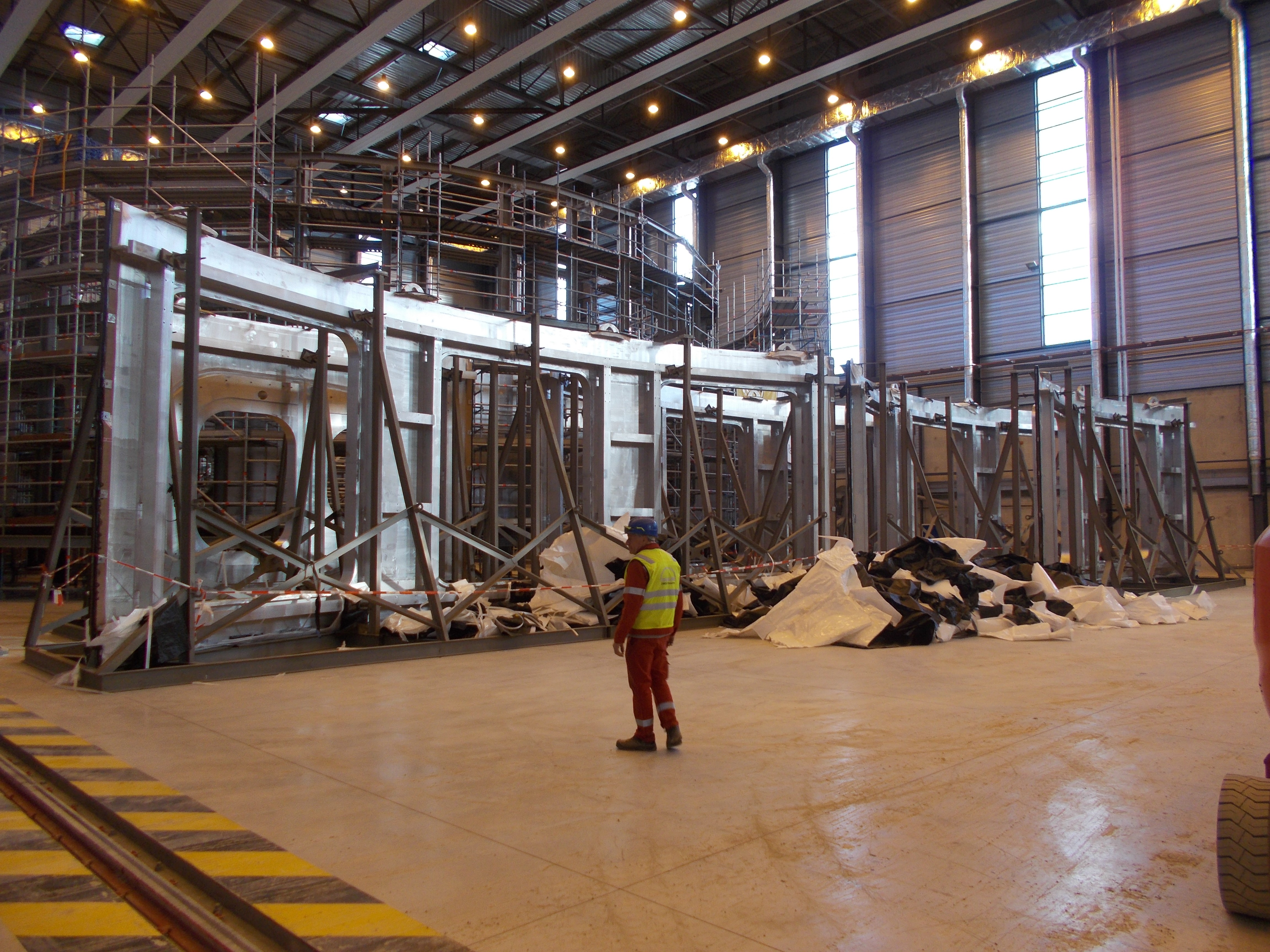
Sections of the "second" floor of the lower cylinder against the building berth, where this structure is welded.
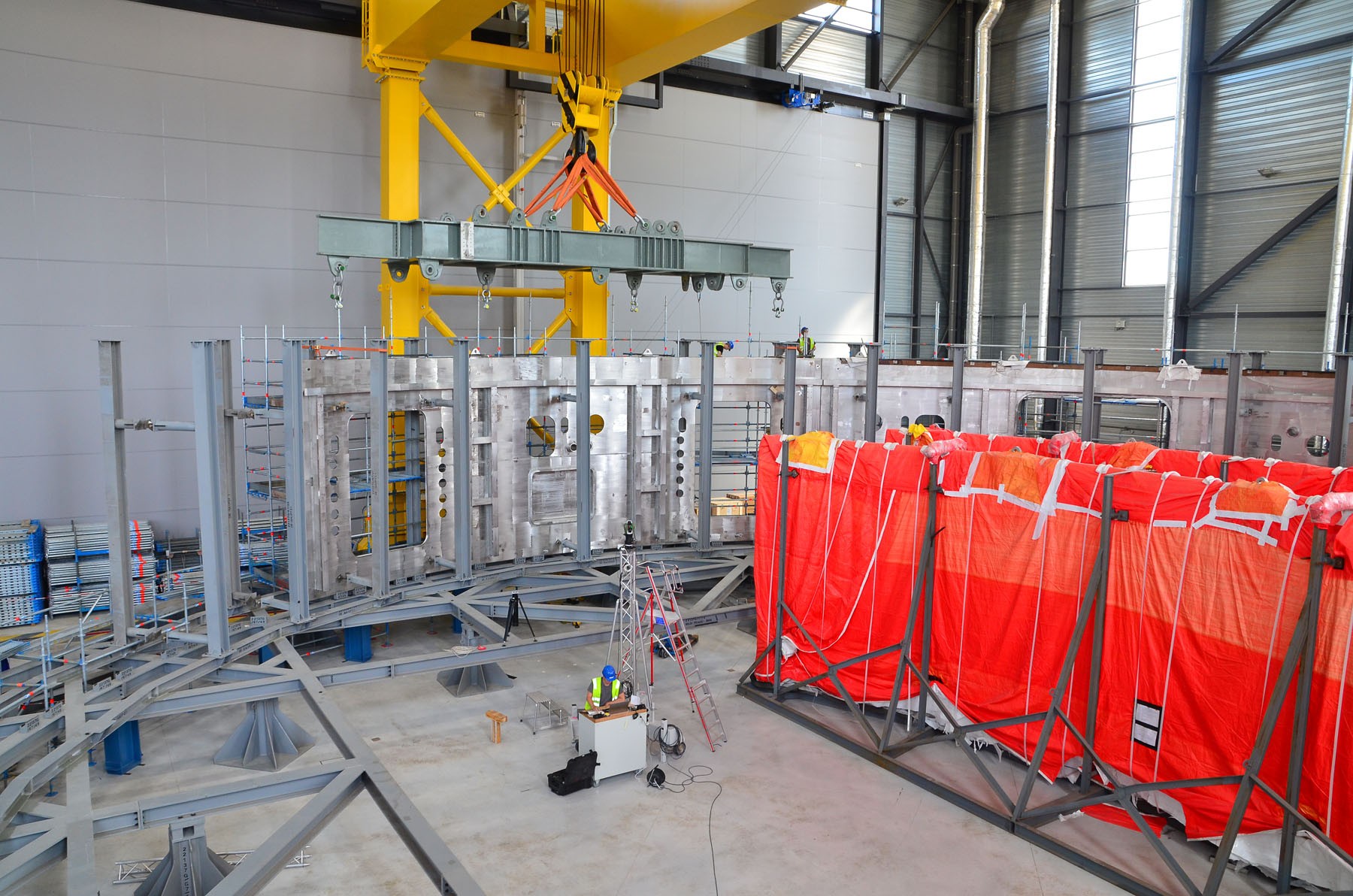
- Interestingly, the entire cryostat and the tokamak in it, with all their 23,000 tons, will rest on the concrete base through 18 hemispherical bearings. The first serial bearing of this kind was made in Spain in 2017, and the installation of the cages of these bearings in concrete can be seen in February-March 2018.

- Another, more grandiose and expensive tokamak subsystem is its superconducting magnets . The ITER magnets are many times superior in their parameters to everything that was created before this project, therefore they demanded the construction of a multitude of productions, which was started much in advance (even before the construction of the ITER itself). However, this supply of time played well - in 2017, the first regular ITER magnets finally appeared from semi-finished products, including:

- The first 2 flyers of one of the largest (with a diameter of 14 meters) PF5 coils are reeled, it is also manufactured at the ITER site.
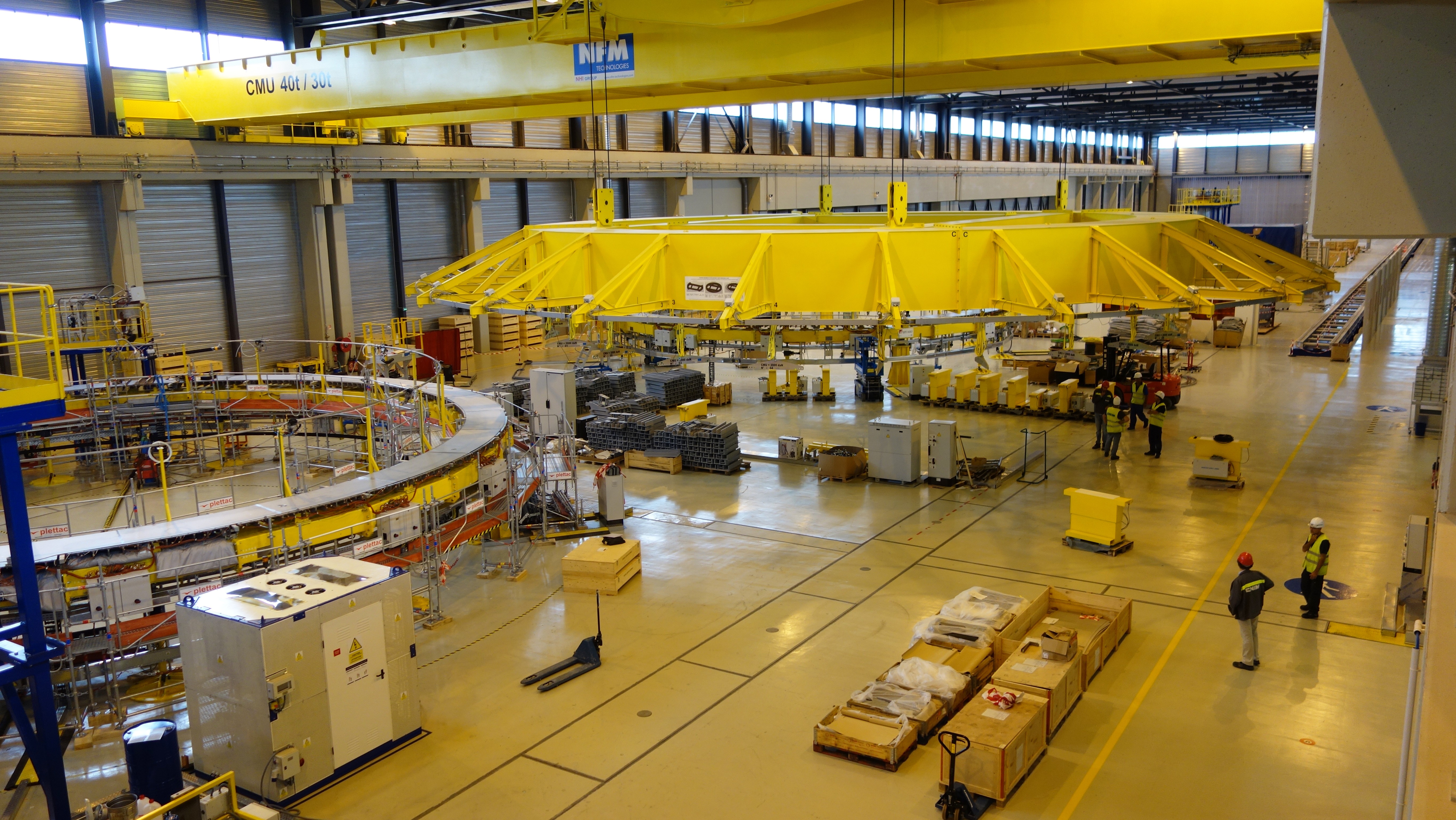
- In the USA, the first module (out of 7) of the central ITER solenoid was manufactured, which in the future will intercept the record of the most powerful magnet from the ITER toroidal coil

- In China, from the Russian superconductor, the first 3 biscuits of the heaviest PF6 coils are wound: it, in spite of the number, is also one of the very first elements of the reactor to be installed.

- In Italy, the winding bag of the first toroidal coil was handed over (altogether 10 will be manufactured in Italy and another 10 in Japan). Currently, it is the largest and most powerful (in terms of stored energy) magnet in the world. This package is currently transported to the SIMIC plant, where it will have to undergo cold tests and welding in a 200-ton stainless steel case.

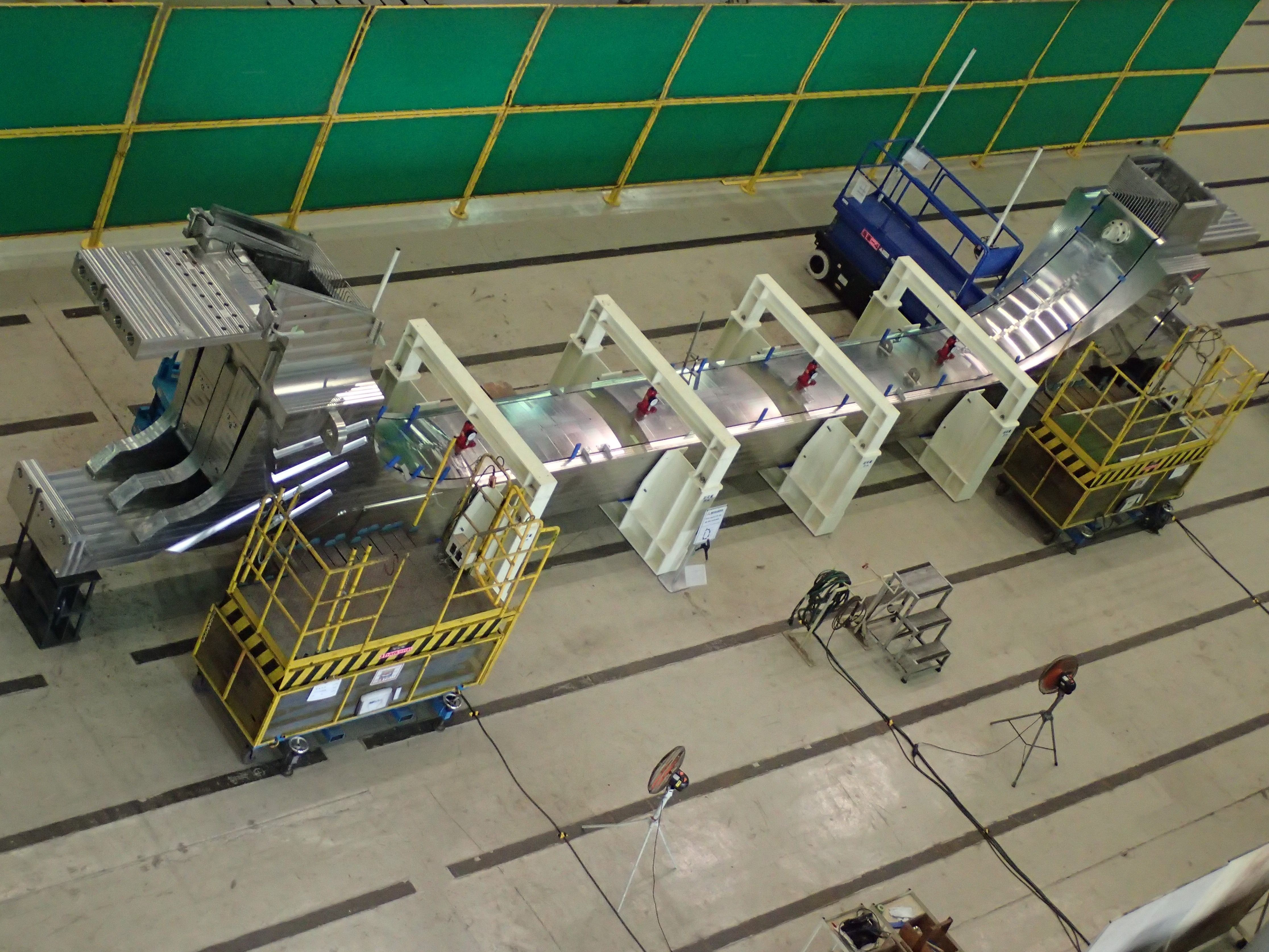
Made in Japan, the first internal semi-hull in August 2017 was sent to South Korea for docking with an external semi-hull manufactured there. Together, the housing will be welded already when assembling the magnet.

In the photo above - the support of a toroidal magnet, made in China. The size of this product is 2x1x1 meters, and this design provides the mobility of the magnet relative to the base in one direction. This is necessary in order that the design does not collapse from compression during cooling down.
- This year, the French-German team assembled the first cryosorption pump responsible for maintaining the extremely high vacuum in the ITER vacuum chamber.

In the photo above - absorbing plates with activated carbon, cooled from the inside with liquid helium.
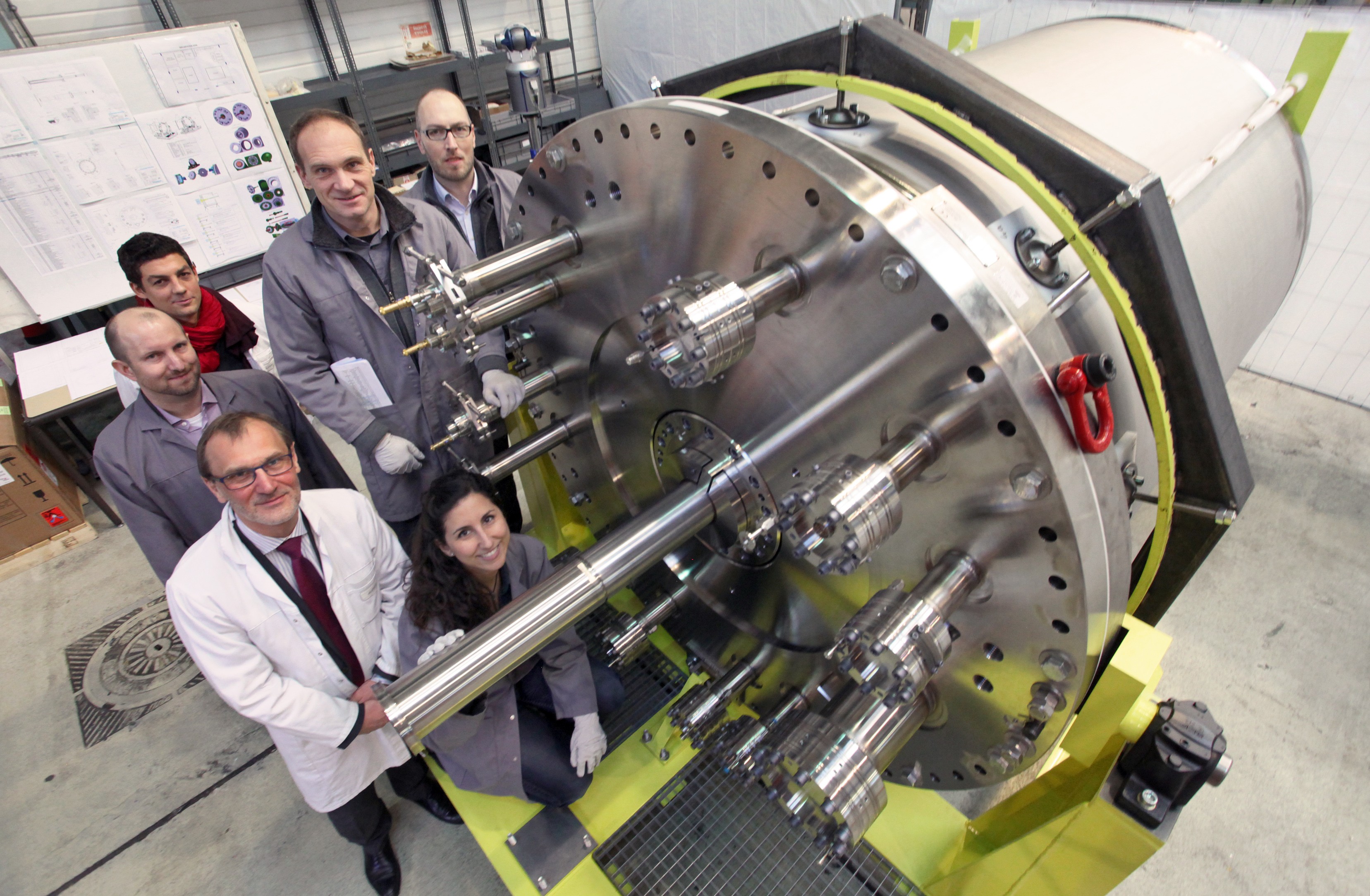
And this is the cryopomp housing from the side of its “atmospheric” flange.
- One of the most important events, in my opinion, was the arrival at the ITER site in October 2017 of the cryomagnetic PF4 coil feeder. This product is an evacuated tube in which hydraulic and electrical (including superconducting) communications are routed to the corresponding magnet. The cryofider PF4 is far ahead of other similar products for the simple reason that it will be walled in concrete. The importance of this event is that this is the first high-tech product manufactured specifically for ITER on the site and for acceptance of such things, it is necessary to create a special infrastructure that will be tested by this delivery.
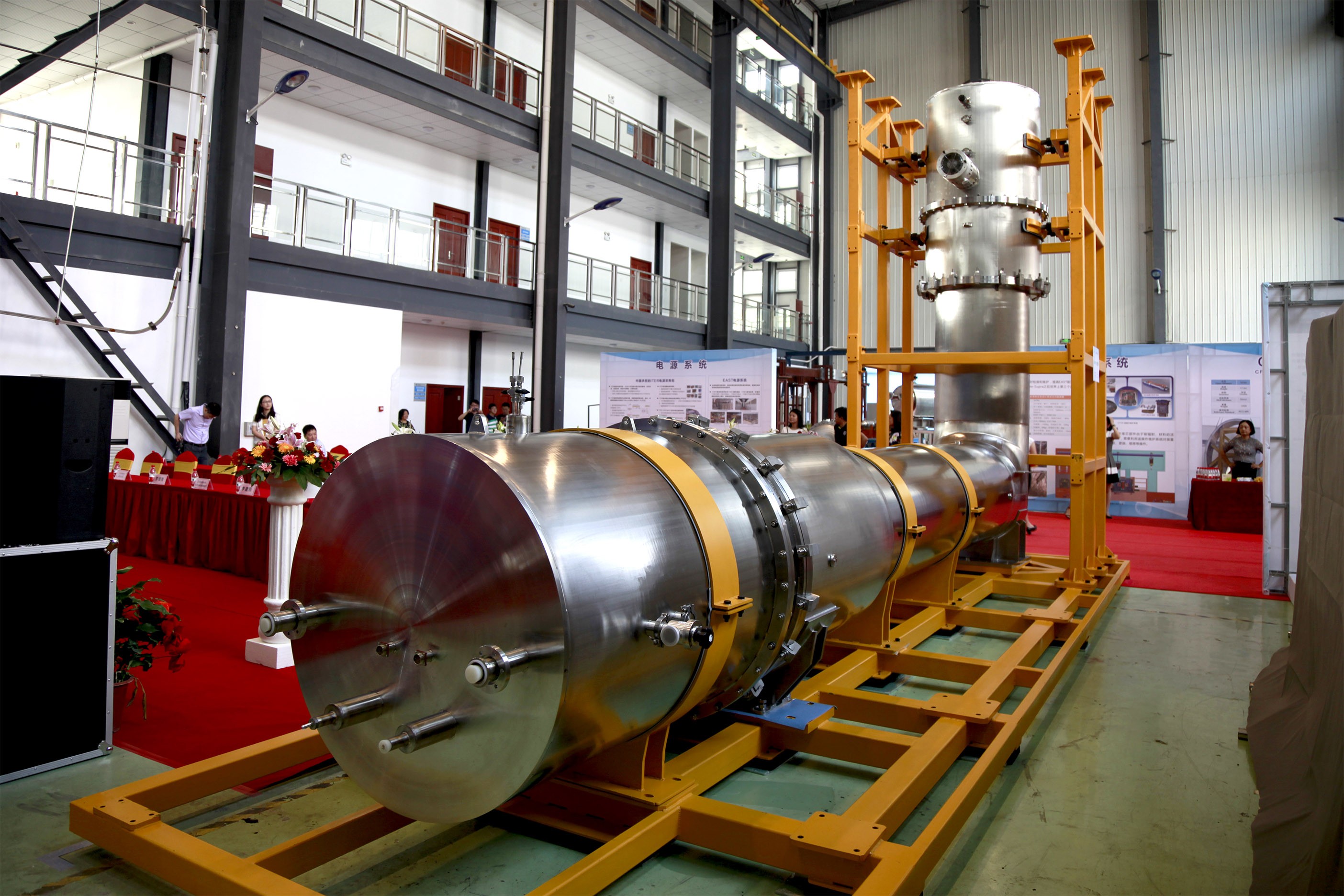
- In Russia, meanwhile, successfully passed the factory acceptance tests of the first (out of 8) serial gyrotron - a megawatt microwave radio tubes to heat the plasma and control the current in it, without which the tokamak cannot start. Gyrotrons are one of the high-tech technologies (admittedly, highly specialized), in which Russia remains one of the world leaders. Next year the gyrotron should be shipped to the ITER site.
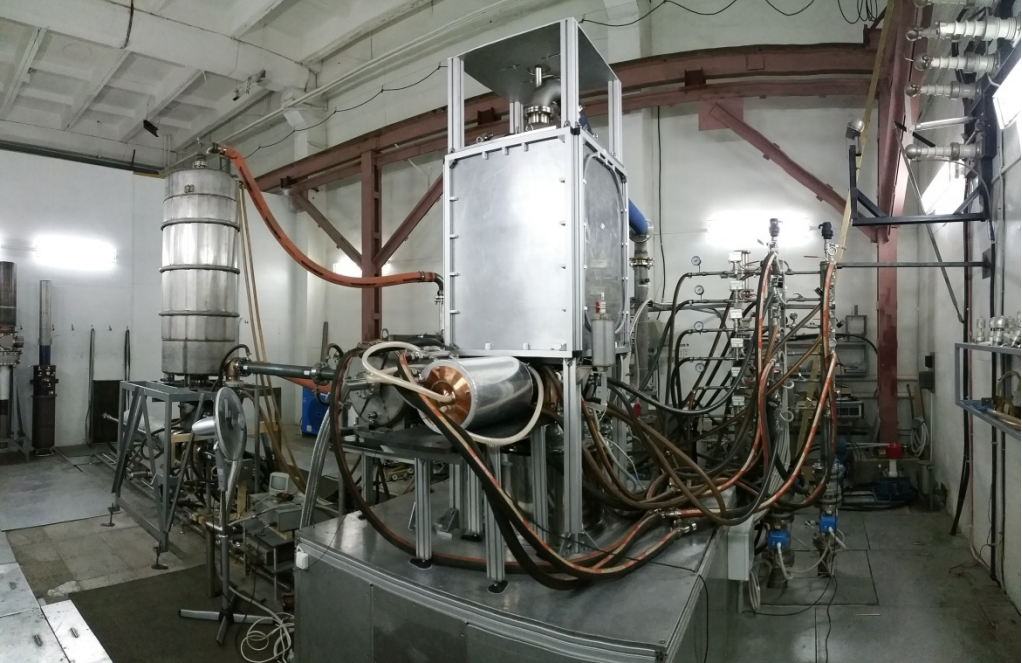
Stand acceptance testing of gyrotrons. In the foreground there is a gyrotron in protection, a matching resonator. In the background - the load on megawatts of microwave radiation
- Another product that Russia supplied in 2017 was aluminum tires, through which current would flow from magnetic rectifiers to cryo-feeders. Last year, 80 tons of 12-meter tires (cross-section up to 200x240mm) and a lot of related elements of the cooling system of tires and thermal compensating inserts were shipped.
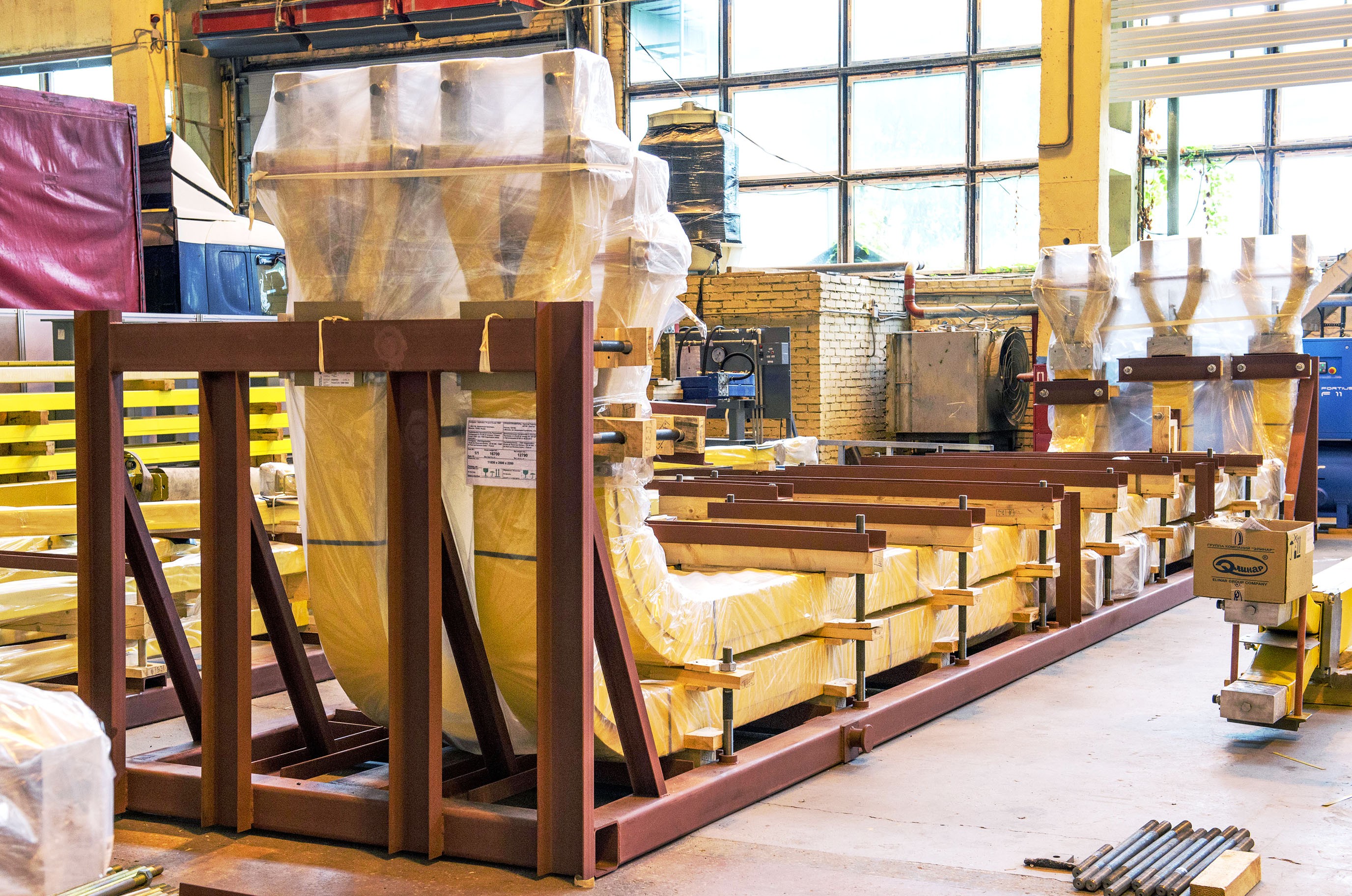
- Together with busbars, Russia should supply much more intelligent equipment - high-speed switches and switches for current up to 70 kiloampers and voltages up to 8.5 kilovolts. Tests of a serial prototype of one such switch took place in May of this year in St. Petersburg.
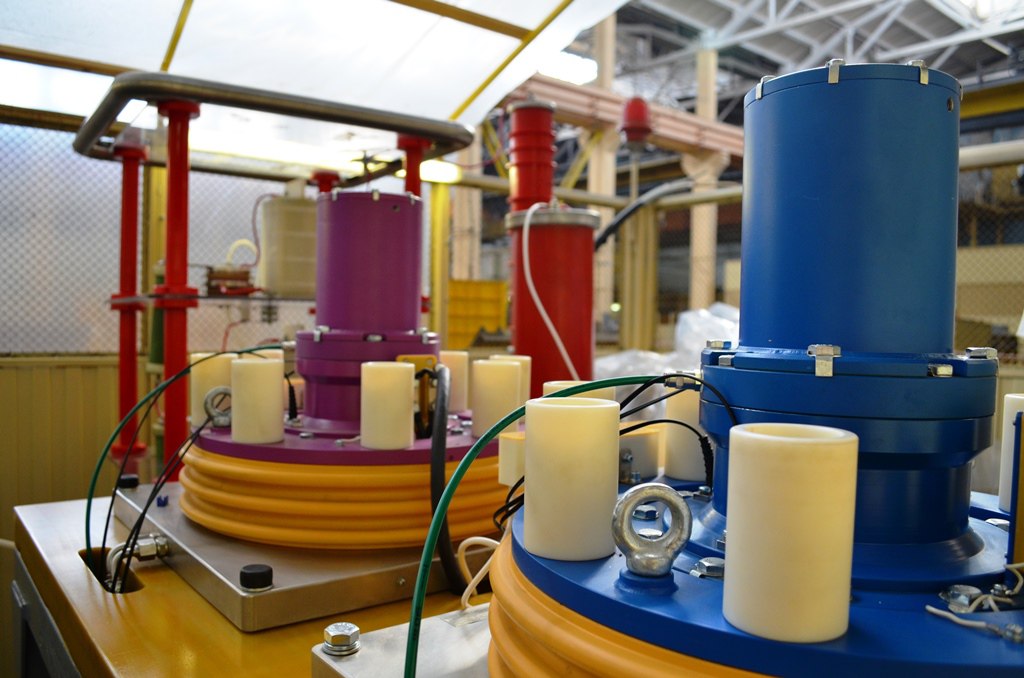
- Concluding the review of the production achievements of the project in 2017, it should be mentioned about the SPIDER stand and, more broadly, the neutral beam injectors (NBI) subsystem. This subsystem is crucial for ITER and at the same time, perhaps, the most high-tech. The European Union is responsible for its creation and delivery, and it does this by building a series of gradually increasing prototypes (ELISE-> BATMAN-> SPIDER-> MITICA-> regular injector). In October 2017, the production of the “heart” of the SPIDER test bench was completed - an ion source for the full current, almost the same as that used in the ITER injector.

The ion source SPIDER consists of 8 radio frequency plasma generators and an electrostatic pulling system that accelerates negative ions into the accelerator. View from the pulling system. More details.
This delivery highlights one of the important features / problems of super-large and long research projects - opening feedbacks on the effectiveness of solutions. The fact is that this ion source was designed ~ 15 years ago and laid as the basis for neutral injectors. Since that time, it has become clear that the proposed scheme may not earn with the characteristics that are needed - some experts believe that the beam current will be two times less than the nominal one.

Stand SPIDER. Inside the concrete bioprotection bunker, you can see the central part of the vacuum chamber of the stand, to which the supply line of the various components of the ion source fits from above, hanging at -100 kV.
However, the existing pattern of organization of large R & D and distribution of responsibility in megaprojects does not give chances to rework existing solutions - it remains to be hoped that the possible future problems of the NBI ITER can be solved by fine tuning and minor modernization without major changes.
Conclusion
Large research works have one internally insoluble contradiction: on the one hand, to allocate billions of dollars of work on the project should be painted, justified and responsibly distributed to the performers, on the other hand, starting such a project, the creators often do not yet know its final appearance. he and research. The only working recipe for solving this conflict is to reduce the scale of a single project. However, on the path of progress in many areas today, simple and cheap options for creating something new have been exhausted. Mankind is increasingly forced to meet with the development of machines of such magnitude that they do not fit into one head, and so stretched in time that they do not fit into a typical specialist career. As much as we would like, but it is necessary to learn to work with such tasks, and ITER is a good training bench here. But, let's hope, not with the project, about which they will say “it turned out that it was impossible to build”.
Source: https://habr.com/ru/post/371151/
All Articles